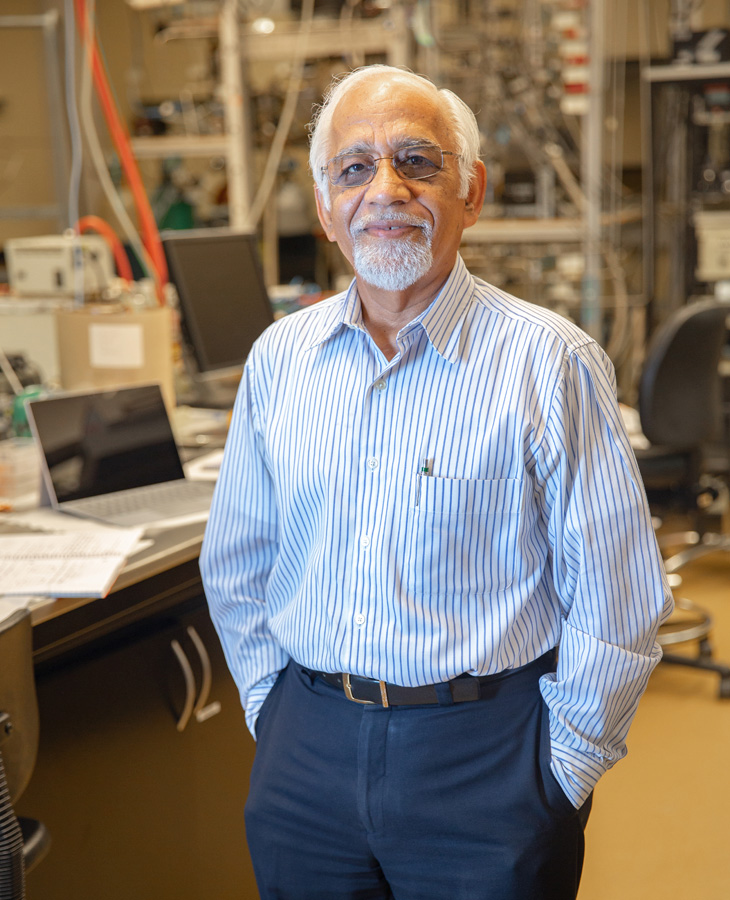
CEAT Regents Professor elected AAAS Fellow
Wednesday, April 24, 2024
Media Contact: Desa James | Communications Coordinator | 405-744-2669 | desa.james@okstate.edu
Oklahoma State University professor Dr. Raj N. Singh has been elected to the rank of American Association for the Advancement of Science Fellow.
Singh is a Materials Science and Engineering Regents Professor in the College of Engineering, Architecture and Technology.
The selection of AAAS Fellows emphasizes one’s commitment to excellence and innovation, recognizing those who have been preeminent not only in their respective fields, but also in effectively communicating and disseminating scientific knowledge to the broader public.
According to AAAS, Singh is being honored “for pioneering and game-changing scientific and technological contributions to the field of materials, particularly transformative processing and manufacturing of Ceramic Composites, leading to technology insertion into commercial jet engines.”
Singh will be recognized at the annual Fellows Forum in Washington, D.C., where he will receive a certificate and the traditional rosette, which has symbolized the award since 1874.
The AAAS, founded in 1848, is the world's largest general scientific society. The nonprofit includes more than 250 affiliated societies and academies of science, serving 10 million individuals.
“I am proud of having professor Singh, a recognized leader in ceramic matrix composites, in our college,” said Dr. Hanchen Huang, CEAT dean. “As an elected Fellow of AAAS, Dr. Singh represents OSU well and is in a great position to shape national policies of sciences.”
Singh obtained his Doctor of Science in ceramics from Massachusetts Institute of Technology. He worked at Argonne National Laboratory, GE-R&D Center, and the University of Cincinnati prior to his current position.
Since joining OSU in 2012, Singh has continued to make lasting contributions in science and engineering.
Early on, he served as the founding head of the School of Materials Science and Engineering, which is the first and only school nationwide to offer graduate degrees related to advanced materials for energy technologies, nanotechnologies, electronics, medicine and aerospace.
In 2015, he was recognized with his induction as fellow of the National Academy of Inventors by the Deputy U.S. Commissioner for Patent Operations from the U.S. Patent and Trademark Office for his inventions. Singh’s innovations have made lasting impacts in more efficient aircraft engines, more powerful sodium-sulfur batteries utilized for energy storage systems, and novel electrolyte retainers and self-repairing glasses for molten carbonate and solid oxide fuel cells.
Most recently, Singh was elected as a member of the National Academy of Engineering, a title seen as the highest distinction and recognition an engineer can attain. The award was based on Singh’s outstanding contributions to the discipline of MSE and his pioneering invention of the ceramic matrix composite.
The field of ceramics has drawn Singh’s interest since entering college.
“I was quite fascinated by how new materials can be created that may not exist today but can revolutionize technology and create products with unsurpassed properties,” Singh said.
Singh encourages students in the engineering field to remain curious, persevering,
creative, inventive and passionate about their field.
"Never forget to be curious and inventive. It should be a lifelong pursuit."
“Ultimately, use your knowledge and skills to create new materials and products to benefit society, the nation and the world,” Singh said. “Never forget to be curious and inventive. It should be a lifelong pursuit.”
To read more about Singh’s research, click here.
